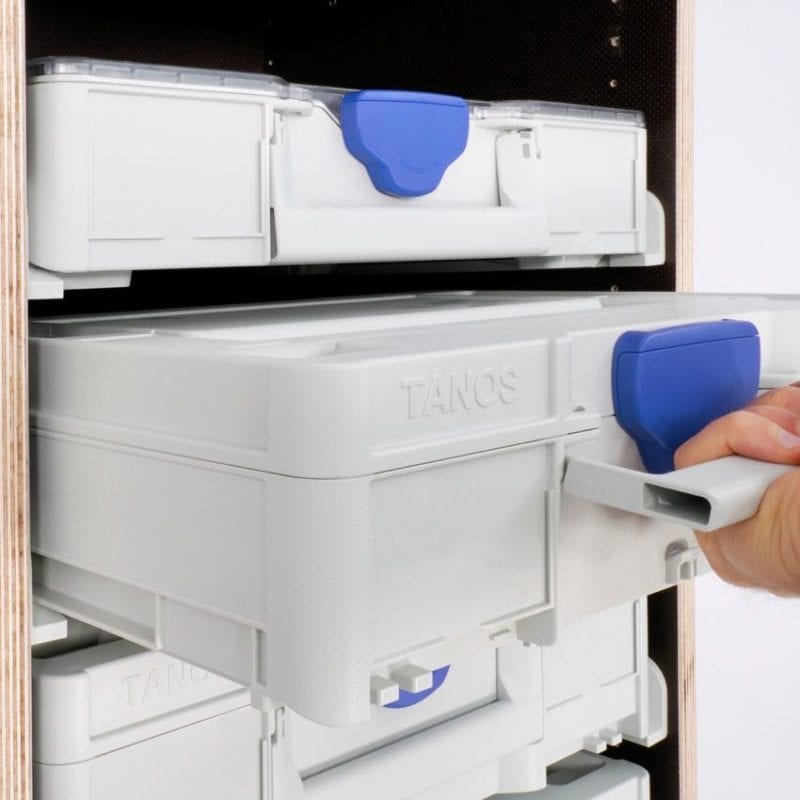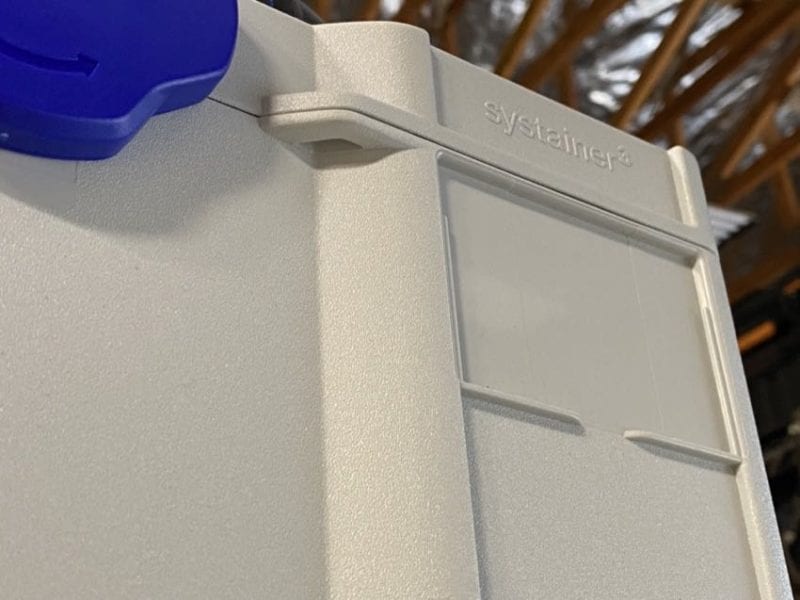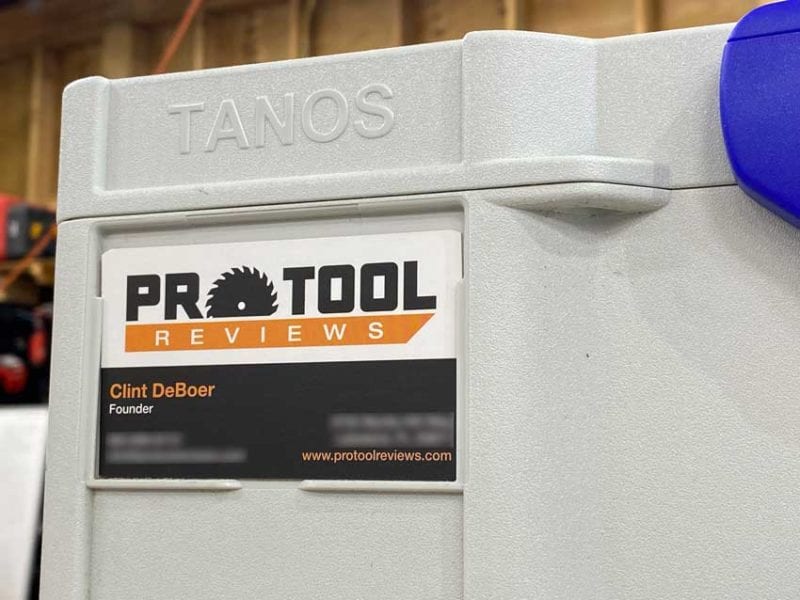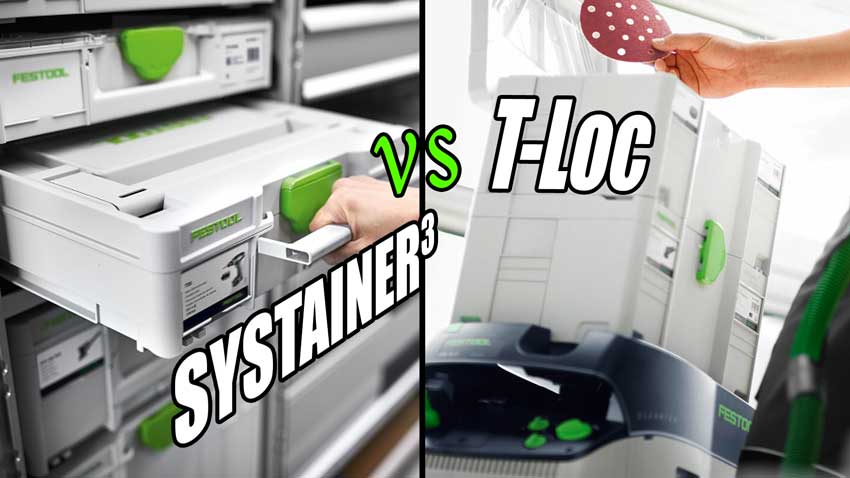When we started getting Systainer³ organizers and storage boxes for review, we immediately wanted to compare them to the T-Loc systems we had used for years. As we compared Systainer³ vs T-Loc to understand the differences more and more of the new features made a lot of sense for mobile tradesmen and tradeswomen.
Table of contents
Origin of Systainer³ Organizers and Storage Boxes
TANOS Systainer storage and organizer boxes have been around since 1993. Seeing the line expand and evolve over the years brings more features to the line—with the latest being the Systainer3 system.
Initially, Systainer³ (sometimes written Systainer3 or) came from Europe. It was introduced as a response to increased mobile work requirements. Among other things, these requirements had more tradesmen needing a full suite of tools on-hand from their work van or truck. Organization significantly helps the workflow.
Tanos designed the Systainer³ to integrate into Bott Vario3 van racking and shelving systems. While you cannot (yet) purchase Bott Vario3 vehicle equipment in the USA, the TANOS Systainer³ offer significant advancements. In particular, the Systainer³ offers features specifically engineered for vehicle racking systems.

Systainer³ Organizer Boxes Key Features vs T-Loc
Independent from the vehicle integration, there are some further optimization and new features in comparison to the T-Loc Generation:
Systainer³ Rails
Systainer³ rails provide easy storage and removal of these boxes when racked. You can truly create a fully-customized racking system with direct access to every box independently.
The Systainer³ rails take advantage of the integrated rail slot of the Systainer. As an accessory, the $20 Systainer³ rail kit provides easy layout and installation wherever the user needs it in their workshop or vehicle. Use these to store systainers in a cabinet in your workshop without additional trays or shelves.
Each set includes 1x rail left side and 1x rail right side. The Systainer3 rails work with Systainer³ M, L, Systainer³ Organizer M, L, Systainer³ ToolBox, and the Systainer³ CART “SYS-RB”.

Integrated Front Handle
In comparing the Systainer³ vs T-Loc you can’t help but immediately notice the front handle. This welcome addition lets you carry the systainer upright. TANOS also added feet at the back of the box so you can also stand the Systainer³ upright.
Theft Tags
Integrated theft tags show up as gaps/loops in the Systainer³ where you can use a thin cable lock or cable tie to secure the lid. This protects TANOS Systainer3 contents from theft and also provides a way for dealers to secure lids on systems containing tools or accessories for sale.

Optimized Labelling Possibilities
Systainer³ allows the placing of plug-in cards also when the Systainer³ is closed. Moreover, these plug-in/labeling cards resist falling off due to the raised edge. These help users know exactly what’s inside the Systainer³ and you can always reorganize when needed.

Systainer³ vs T-Loc Increased Stability
The stability of the Systainer³ vs T-Loc is greatly optimized. It features a new design structure with a third lid hinge and an increased double base cross. Together, this makes the Systainer³ more stable and durable than the older T-Loc cases. Additionally, the lateral bracing helps the frame and lid of each case seat together more readily and easily—including when placed on uneven ground.
Systainer³ vs T-Loc Conclusion
One thing you should not forget—TANOS Systainer3 and T-Loc boxes are fully backward-compatible. You can stack them together and lock them for use in nearly any capacity. That’s great news for owners of systainers who want to expand their T-Loc systems with newer Systainer³ boxes.
For more information, check out the TANOS website.


